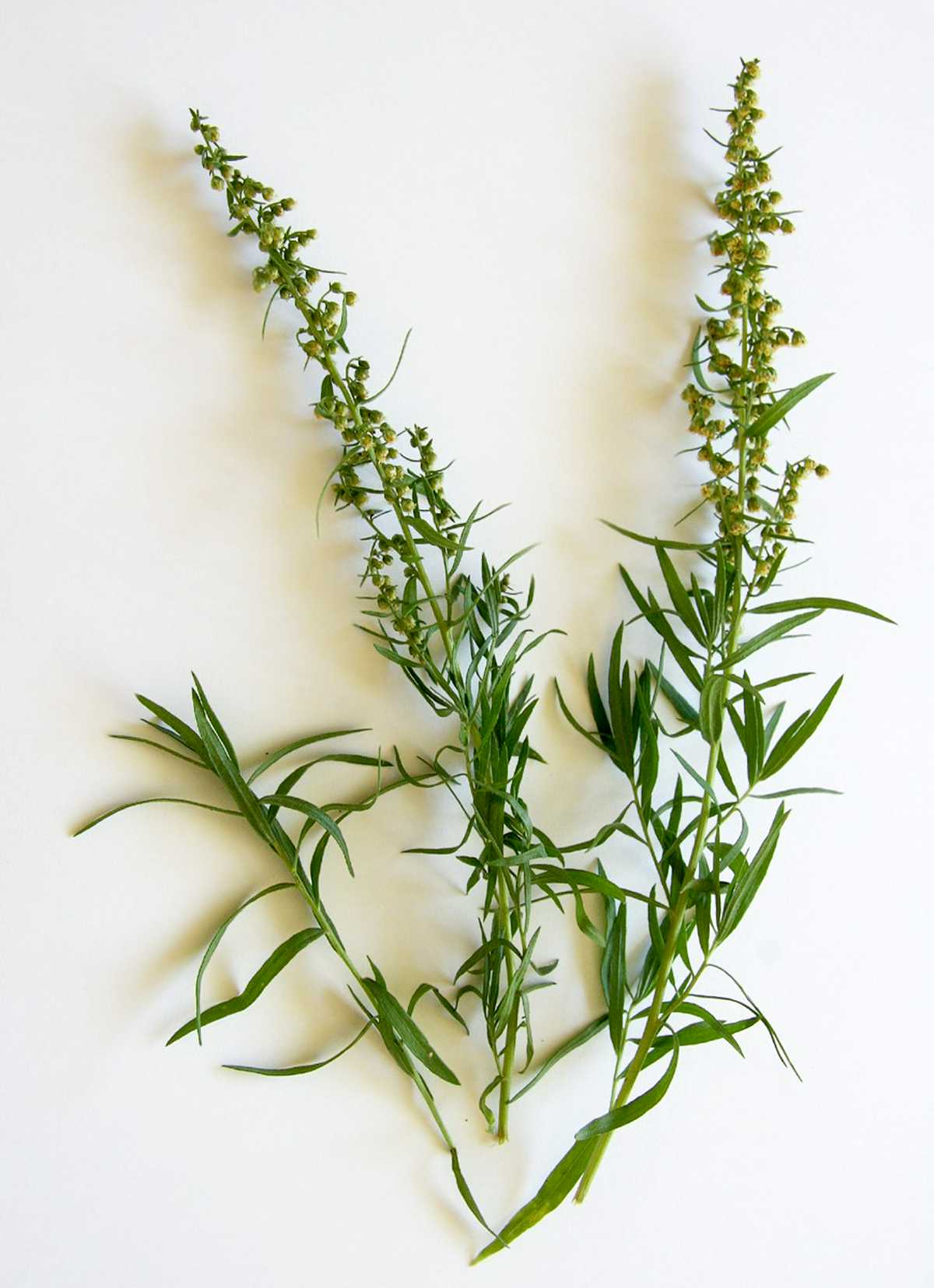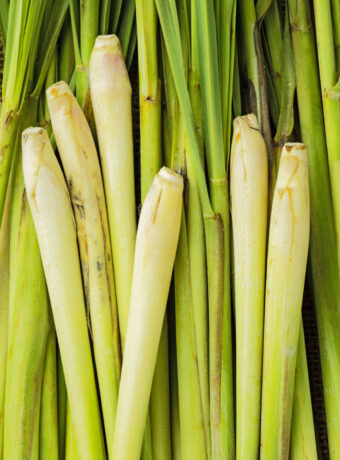Tarragon Substitute
Tarragon has a wonderful flavor similar to licorice or anise. If you’re using a recipe that calls for fresh or dried tarragon and don’t have any, don’t worry! There are several great ways to make a tarragon substitute.

I love the way tarragon gives an extra layer of flavor to my cooking. It has a lovely anise taste that makes many dishes stand out in the best way. I most often use fresh tarragon in big salads with avocado.
Tarragon is prevalent in French cuisine but also appears in many other recipes. It’s a classic in bearnaise sauce. It’s a great choice for cooking in the spring and pairs well with poultry, vegetables, and acidic foods like citrus fruits.
So what do I do when I’m in the midst of a recipe and find out I don’t have any tarragon? Easy. I find a tarragon substitute. Several herbs can stand in for tarragon and still turn out a delicious meal.
It’s not as easy to create the same flavor with a substitute for tarragon, but it can be done. Use any of the following options and I promise you’ll be happy with the finished meal.
Dried Tarragon
When a recipe calls for fresh tarragon and you don’t have any, the obvious alternative is to use the dried version.
It’s not always easy to find fresh tarragon unless it’s spring. For the rest of the year, dried alternatives are a viable option.
However, dried tarragon has a more bitter flavor than fresh, so you want to use it sparingly. In other words, don’t sub it at a 1:1 ratio when the recipe calls for fresh tarragon.
In general, expect to sub one teaspoon of dried tarragon for every tablespoon of fresh tarragon. You can adjust the flavor by adding more, as needed.
Fresh Basil
Finding fresh basil is easier to do year-round and it has a similar tarragon flavor. That makes it one of my favorite options as a substitute.
Fresh basil leaves can be used at a 1:1 ratio for fresh tarragon leaves. Because basil leaves are larger, slice them thinly before you add them to your recipe to mimic the texture and size of tarragon leaves.
Basil is a great substitute in pasta dishes and when used to flavor soup, fish, and poultry.
Chervil
When it comes to flavor, chervil is a close second to tarragon. In fact, the taste and aroma are so similar that you might not even notice the difference. If you can get your hands on some chervil, I highly recommend giving it a try.
You’ll still get the same anise undertones you find in fresh tarragon, but you also get a bit of chives and parsley mixed in, making this one of the herb substitutes I turn to often.
You can sub chervil into your recipes at a 1:1 ratio. However, chervil has a milder flavor, so don’t be afraid to add a bit more if you want to jazz up the taste.
Chervil works especially well as a substitute in bearnaise sauce but is also the ideal choice for salads and egg dishes.
Dill
I love dill and I think its fresh flavor is perfect for many recipes. It’s also one of the most recommended tarragon substitutes.
While you won’t get quite the same anise impact in the flavor profile, you’ll still get a fresh herby taste that is wonderful in a variety of meals.
For people who don’t love the flavor of anise, dill makes a delicious alternative so that you can still enjoy your favorite French dishes.
Use dill at a 1:1 ratio for tarragon. It’s best in seafood dishes.
Fennel
The great thing about fennel is that, like tarragon, it has a robust flavor that really stands out in your cooking. When you don’t have tarragon on hand, fennel gives your meal a similar flavor explosion.
If you’re using fresh fennel, you can substitute at a 1:1 ratio for fresh tarragon. Fennel seeds have a much more concentrated flavor, so if you’re using them, start with 1/16 of a teaspoon for each tablespoon of fresh tarragon.
You can add more to the dish after tasting it. Fennel has a slight anise undertone, but you don’t want to go overboard with it or it will take over the dish.
Fennel is a tasty substitute in soup, vegetable side dishes, citrus dishes, and salads.
Anise
Anise goes by a couple of names – aniseed and anise seed among them. The reason it makes such a good substitute is that it has a similar flavor profile to tarragon.
In fact, most experts will tell you that anise is the perfect combination of tarragon and fennel. Sounds delicious, right?
Anise has a strong flavor so you don’t want to go too heavy with it. Start with just a pinch to replace each tablespoon called for in your recipe. Then add a bit more if you want to.
Anise is an ideal substitute for tarragon in soup, broth, sauces, and stew.
Marjoram
Marjoram won’t lend your dish an anise flavor, but it still makes a wonderful substitute for tarragon. It has an earthy taste that will enhance just about any recipe that calls for fresh or dried tarragon.
It’s often easier to find too. If you’re subbing dried marjoram for dried tarragon, you can do so at a 1:1 ratio. Use less if you’re subbing it for fresh tarragon since the flavor tends to be more concentrated when it’s dry.
Marjoram is similar to oregano, so it’s a great option for subbing in pasta sauce. It also works well in poultry and vegetable dishes, as well as being delicious in homemade salad dressing.
Angelica
While it doesn’t have precisely the same tarragon flavor, angelica makes a tasty substitute. It works especially well in recipes that call for dried tarragon.
Angelica is similar to fennel and dill so it has a hint of anise flavor, combined with a fresh herby taste. It might not be the most common herb, but it’s definitely one of my favorite tarragon substitutes.
Use angelica at a 1:1 ratio for dried tarragon. If you’re using it replace fresh tarragon, use about a teaspoon for each tablespoon.
Soup, stew, fish, and poultry are the best dishes to use angelica in.
Parsley and Cinnamon
When combined, fresh parsley and cinnamon mimic the taste of tarragon. This is one of the best substitutes if you’re making bearnaise sauce and realize you’re out of fresh tarragon.
Simmer a 1/2 teaspoon of cinnamon and a tablespoon of parsley in a 1/4 cup of water. Don’t boil the mixture, but allow it to simmer for several minutes.
You can then use it to finish your bearnaise sauce. The parsley adds the herby freshness you get from tarragon and cinnamon packs the sauce with the intense flavor you expect from the tarragon.
Oregano
Oregano is one of the most versatile herbs out there and can be used in place of tarragon in just about any recipe.
It will give you a bit of bite and a peppery flavor that stands out in many recipes. You can use oregano at a 1:1 ratio if you’re subbing it for dried tarragon.
It works well in pasta dishes, but also stands out when you use it to flavor chicken, vegetables, and salad dressing recipes.
Choosing the Right Tarragon Substitute
Part of the fun of making herb substitutes is getting to experiment in the kitchen. If you run out of tarragon, it’s the perfect chance to try something new and broaden your horizons at mealtime.
Keep in mind that dried herbs have a much more concentrated flavor than fresh. If that’s the option you’re going with, be sure you start with a small amount and add more as you go.
The best thing to do is add just a pinch or dash of the dried herb and then taste the dish. You’ll be able to tell if you need more or if you already have enough.
If you find that you don’t like the herb substitute you chose, don’t be afraid to try again with something else next time.
Tips for Making Herb Substitutes
The best tip for making herb substitutes in the kitchen is to consider the flavor. The alternative you choose won’t have the same taste as the one called for in the recipe. Check out our top Fenugreek Substitutions, for example.
But you can often get a pretty close second by considering the flavor you want for the finished dish. Taste the herb on its own before you add it to the recipe. That way you have an idea of what to expect when the meal is ready to eat.
Again, don’t be afraid to experiment. What’s the worst that can happen? You might be a bit disappointed in the final result. But, you might also find that you love the substitution better than the original.
Finishing Your Dish
Now that you’ve chosen the perfect tarragon substitute for your recipe, you’re ready to finish the dish.
Choosing the right thing to serve with your meal is part of making sure it’s as delicious as you’re expecting. For example, if you’re making a poultry dish, serve it with potatoes and vegetables.
An egg dish works well with mixed greens and a vinaigrette. Soup or stew is great with crackers or bread.
Before you go, have a look at all of my delicious recipes. Then have some fun experimenting with them. Have fun!
More Cooking Substitutions & Conversions to Know
- Fenugreek Substitute
- Red Wine Vinegar Substitute
- How Many Ounces in a Cup, Quart, Gallon
- Teaspoons to Tablespoons
- How Many Tablespoons in a Cup
Tarragon Substitute
Do you need a substitute for fresh or dried tarragon? While there isn't anything that tastes exactly the same, here are some great options.

Ingredients
- Dried Tarragon
- Fresh Basil
- Chevril
- Dill
- Fennel
- Anise
- Marjoram
- Parsley and Cinnamon
- Fresh Oregano
Instructions
- Choose one of the herbs above to substitute in your tarragon recipe. Go slowly with adding the herbs and taste to make sure it works.
Nutrition Information:
Yield: 1 Serving Size: 1 tablespoonAmount Per Serving: Calories: 3










So easy and yummy.
Raising plants not only decorates your home but also creates a fresh environment for your place.